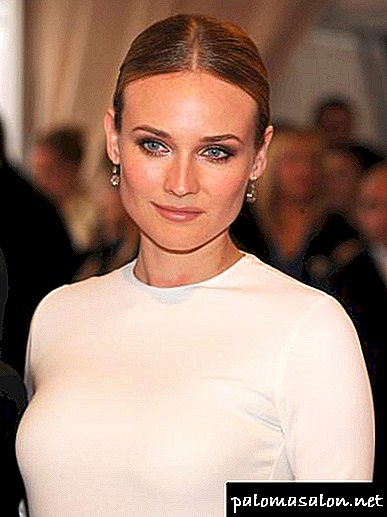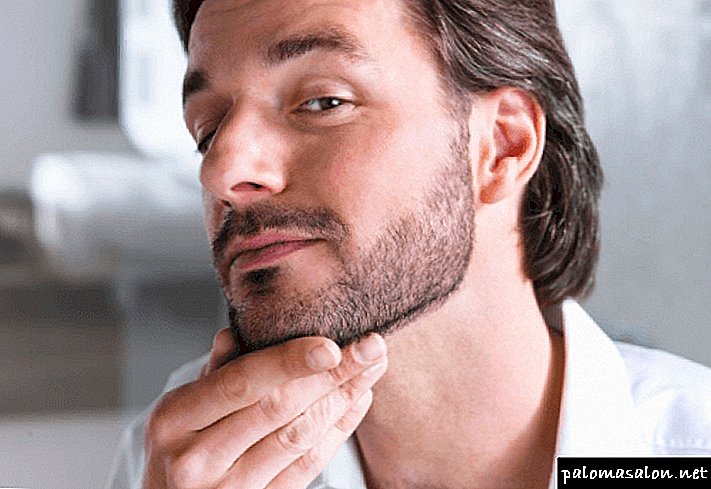
If thick long hair is an ornament of a woman, then a beard is an essential attribute of a man, especially in our time, when the vegetation on a man’s face is at the height of fashion. Unfortunately, it is not so easy to grow a beard - some people do not have particular density and health, others do not grow evenly, which is why they cannot achieve the desired effect. A hair transplant on a beard is a real and fast way out for men who want to join the number of bearded men.
Is a beard a fashion trend or an evolutionary necessity?
Nowadays, more and more men pay attention not only to the scalp, but also resort to beard hair transplantation. At the same time, the popularity of bearded men is explained not only by fashion trends.
Australian psychologists B. Dickson and R. Brooks decided to study whether the presence of a beard affects the degree of attractiveness of a man. During the study, representatives of both sexes were shown photos of men without a beard, with light, thick bristles and a beard. The task of the volunteers was to assess the degree of attractiveness, health, masculinity, as well as the hypothetical ability to be a good father, depicted in the photo of individuals.
According to the results of the study, it was the owners of thick bristles or a full-fledged beard that were the most attractive in the eyes of women for all the above parameters.
According to the results of the study, it was the owners of thick bristles or a full-fledged beard that were the most attractive in the eyes of women for all the above parameters.
Scientists are not at all surprised by such results, because, from the point of view of evolution, a beard makes it possible for women to understand that the potential partner is mature enough and ready to continue the race.
Men who do not manage to grow a thick beard on their own will be interested to know about:
- features of hair transplant on the beard,
- effectiveness of the HFE transplantation method.
Features of hair transplant on the beard: HFE method
Modern medicine has in its arsenal a whole mass of methods that allow accelerating hair growth, returning its former pomp and density. Hair transplantation copes with this task most effectively. When it comes to beard hair transplantation, traditional transplantation techniques have two major drawbacks:
- high degree of soreness
- presence of scars.
Modern technology HFE transplantation provides minimal invasiveness during the removal and implantation of follicles, resulting in painlessness and the absence of scars after surgery.
Fortunately, the modern technology of HFE transplantation provides minimal invasiveness during the removal and implantation of follicles, resulting in painlessness and the absence of scars after surgery.
The feature of this transplantation technique is the manual extraction of hair follicles from the donor area using microsurgical instruments. And for the preparation of the recipient zone does not require significant trauma to the skin.
The main advantages of hair transplant on the beard by the HFE method
The procedure of hair transplantation to the beard using the HFE method takes about 4 hours, the microrannels (the thickness of the instrument is only 0.6–0.8 mm) after the operation disappear within a few days after the intervention.
The hair in the donor area and the transplant zone is fully restored within 2 weeks, and after a month and a half, the growth of transplanted hair is observed.
Thus, the patient can become the owner of a thick beard within a few months after the procedure.
The HFE method showed maximum efficiency - after transplantation, the survival rate of the follicles is 98%, and the hair density reaches 80 per square centimeter of skin. The result is natural due to the preservation of the natural angle of the hairs.
There are no scars after the operation; at the request of the patient, the procedure can be repeated.
Thanks to the use of modern technology, hair transplantation on the beard has allowed many men to acquire thick and beautiful facial hair without much effort and no trace of interference.
Beard hair transplant: Why many men are interested in beard transplants
Some men grow a beard, causing it to become thick and long, as if they should always have it. Others struggle to grow a beard that does not look patchy due to bare spots and other problems. Nevertheless, many men beard, of course, gives a brutal look.
For the latter group of men, causes of uneven or insignificant growth of a beard are rooted in genetics or stress, alopecia or hormonal imbalance. But, regardless of the reasons, the problem of insufficient or incorrect growth of a beard can affect self-esteem or cause self-doubt - the main negative trait of every man.
Do not lose hope
The fact is that there are many ways to correct a rarely growing beard, including beard transplantation. Indeed, a beard transplant is similar to a hair transplant on your scalp and seeks to achieve the same desired effect — a thick, naturally looking beard. In this post we are going to consider in more detail the length of the beard transplantation, including how it goes, its effectiveness, and even what is in store for the future. We will also look at other ways to fix a rare beard, but the focus is on beard transplants.
And so, what is the beard transplant?
Beard Transplant: Hair taken from another part of your body is implanted in your face to create a beard style of your choice. Hair transplantation most often resembles the method used to treat falling hair. This procedure in recent years has gained great popularity among men.
A study by the International Society for Hair Restoration Surgery reports that facial hair transplantation is the third most popular type of hair transplant in the world, with the exception of hair and eyebrow transplants.
Minoxidil
The most effective methods for growing beards are minoxidil and beard implants.
Also known as rogein, Minoxidil was originally used to treat high blood pressure. In the early stages, patients found an unusual side effect of minoxidil: it caused hair growth. The Food and Drug Administration approved Minoxidil as a hair growth product in 1988.
While scientists still do not know the exact reason why Minoxidil causes hair growth, they know that this drug stimulates blood circulation in the hair follicles. Better blood circulation means that more hormones and nutrients reach the hair roots, which, in turn, stimulates their growth.
Minoxidil also stimulates the enzyme prostaglandin synthase-1 through the immune system, scientists have for many years suggested that there is a link between hair loss and the immune system.
Beard Transplant Procedure
A beard transplant involves a fairly simple process in which hair follicles are removed (from under the chin or back of the head) and then transplanted into bald spots in the beard. The difference between beard transplants and hair transplants is that doctors make small incisions when hair is transplanted to the scalp.
Facial hair transplants are not just for the beard. Whether it's your mustache, sideburns, or a piece of beard under your lower lip, a transplant will help you achieve your desired look. No matter what type of procedure you choose, the surgeon must first evaluate the consistency of the hair in the recipient area with the area of the body that is the suitable donor part.
New facial hair grows like regular facial hair with similar texture and characteristics. You can shave new hair just as you would with any facial hair, or let them grow to a length similar to a natural hair follicle. After transplanting new hair is extremely difficult to distinguish from your natural facial hair.
Beard transplant types
Isolation of the follicular unit (by the FUE method) and transplantation of the follicular unit (the FUT method) are two main types of hair transplantation, including beard transplantation. Both relate to the method by which surgeons remove hair from a donor area.
FUE method
In the FUE transplant procedure, each hair transplant is removed one by one from the donor area and collected in small circular incisions over a larger area, with barely noticeable white scars left behind.
In FUE, the surgeon can usually collect about one out of every five follicles, although the results vary depending on the doctor and the quality of the procedure. Note: FUE is the most common beard transplant method.
FUT method
With FUT transplantation, a small strip of tissue is removed from the donor area through a microscopic dissection process. Then the surgeon closes the wound edges, leaving a small scar in its place.
Advantages of the FUE and FUT methods
FUE procedures are popular today for beard transplants due to technological advances and improved surgical instruments. In addition, there are several advantages to the procedure for the procedure:
FUE does not leave a linear scar, unlike a FUT transplant.
FUT procedures are most often used in hair transplantation, and also have several advantages:
Procedure for grafting FUE methods: Before, During and results After the procedure
The hair restoration community recommends these instructions to patients who wish to use the FUE transplant procedure.
The following video demonstrates the transplant procedure at the Hairline Clinic in Ankara, as well as beard transplants and photos before and after the procedure:
Preparation for surgery
- Refrain from taking any medicine containing aspirin 10 days before transplantation. However, you can take Tylenol. Also avoid using vitamin E and any multivitamins containing vitamin E, as well as gingko biloba.
- Do not take any anti-inflammatory drugs for three days before the procedure and do not drink alcohol. Also avoid excessive sun exposure.
- If during the procedure you get a sedative, ask someone to take you home. Your doctor will determine what type of sedation he or she will use during a beard transplant.
- If the hair is gathered from the back of the head, make sure that their length is at least half an inch - 1.27 cm, so that they can close the seams after the procedure.
- Refrain from smoking a week before and a week after the procedure - this will speed up the healing process.
- Take vitamin C (1000-2000 mg) once a day for one week, it also contributes to the healing process after the procedure.
On the day of the procedure
- Do not drink coffee or other caffeinated beverages in the morning before the procedure, as they may increase bleeding and sensitivity to medications.
- Take your usual prescribed medication unless otherwise indicated.
- You may need to remove contact lenses before sedation.
Care of the donor area
- You can resume shaving after 7-10 days after the procedure.
- The signs of the procedure usually subside within five to seven days. Most people will only notice your new hair growth and perhaps some mild flaking. Some patients report prolonged pinkness, but taking Benadril 25 mg twice a day will relieve this symptom.
- On the site of each transplant, tiny crusts form, but fall off within four to six days. Gently wipe them after a week, if it does not cause discomfort or bleeding.
- Do not allow the transplanted areas to be wet - if possible - for five days after the procedure. After that, you can normally wash your face, and return to the ordinary way of life.
- The FUE procedure eliminates the presence of seams, so you do not have to remove them or allow them to dissolve on their own.
- You can expect numbness, tingling and other sensations in the areas of transplanted grafts and in the donor area. This is normal and normal and may last for several weeks before it disappears on its own.
- Hair will grow in the same way as regular beard hair that has not been replanted.
Side effects of transplantation
The side effects resulting from a beard transplant operation are relatively minor and just get rid of them.
Among the most common side effects:
The good news is that patients after beard transplants can monitor the improvement in effect the day after the procedure. Swelling and redness should subside after a week. Although you may want to scratch the transplant area, be very careful (do not do it too often and intensively). Crusts on transplant areas are natural parts of the healing process.
Some actions you should avoid to speed up the healing process (unless otherwise specified by your surgeon) include:
What is a beard transplant
This is the transplant of hair follicles to the beard. This procedure is not dangerous, on the contrary due to it the hairs will grow on the cheeks evenly and thickly.
Transplantation is not considered difficult, but rather laborious. Plastic surgery is carried out in the case of complete or partial absence of hair follicles in the lower part of the face, above the lip, in the area of the whiskers.
Attention! Transplanted hair follicles take root well, so a man can later grow a beard as much time as he needs.
Who is recommended transplantation
Hair transplantation is indicated in the following cases:
 - at full or partial absence of hair in the beard area
- at full or partial absence of hair in the beard area- - presence of scars, scars, burns on the face
- - the beard grows in scraps, creates a sloppy look
After identifying the above indications, the doctor examines the patient's state of health, identifies the existing disease, to see if the procedure is contraindicated.
Who is contraindicated
It is contraindicated in the following conditions:
- - poor blood clotting
- - infectious and inflammatory diseases
- - hormonal disorders, oncology
- - autoimmune diseases (diabetes, lupus)
If one of the conditions is present, the operation is not appointed until the disease is cured.
Features and indications of the procedure
The procedure of hair transplant on the beard is carried out at the request of the client to achieve the desired visual effect. In addition to fashion trends, grounds for the procedure can serve as:
- lack of hair on the beard due to hereditary factors
- burns, scars and scars after previous surgeries and facial injuries,
- Uneven hair growth caused by diseases of internal organs.

Important! It is possible to achieve the maximum aesthetic effect of hair transplantation on the beard, provided that the cause that provoked hair loss is eliminated.
Transplant methods
Hair transplantation by follicular associations is the most effective way to grow a new beard. There are three main methods: FUT, FUE, HFE.
The method of beard transplantation is determined only by the doctor.
Literally, the abbreviation FUT stands for transplantation of follicular units. In the people this method received the name - patchwork.
The essence of the method: follicular associations (grafts) are extracted from the occipital zone. They are moved to the pre-marked area of the face (beard).
Advantages of the FUT method:
- Cost The average price of the procedure is 1,100,000-115,000 rubles.
- Minimal risk of damage to the hair follicles.
- Graft survival rate - 100%.
Disadvantages:
- Scars and scars remain in the graft areas.
- During the rehabilitation period, the patient feels pain in the occipital zone.

Literally, FUE is translated as a seamless hair transplant method.
Features of the technique: grafts are removed from the occipital zone with a special needle.
Benefits:
- The absence of scars in the hair follicle collection zone and minimal skin damage at the transplantation site.
- Lack of discomfort in the postoperative period.
- In the event of a lack of follicular associations from the back of the head, other donor areas (legs, groin, chest) can be used.
- Extracted follicular associations contain 3-4 hair follicles.
Disadvantages:
- The FUE procedure requires more time to conduct than other techniques.
- The recovery period lasts from six weeks to six months.
- The cost of the procedure is somewhat higher in comparison with the FUT method - an average of 200,000 rubles.

Literally, the abbreviation HFE is translated into Russian as the extraction of follicular associations manually.
Features of the method: Grafts from the donor zone are extracted using a special needle and also without incisions, the hair follicles are implanted using a special tool to the desired depth in the transplant zone.
Benefits:
- The fastest recovery period (up to two weeks).
- The natural look of an implanted beard.
- Follicular associations can be removed from any part of the body.
- Lack of scars.
- No side effects.
As such, this technique has no disadvantages. The only thing that can restrain a client is the very high cost of procedures: a check for an operation can reach 400,000 rubles.
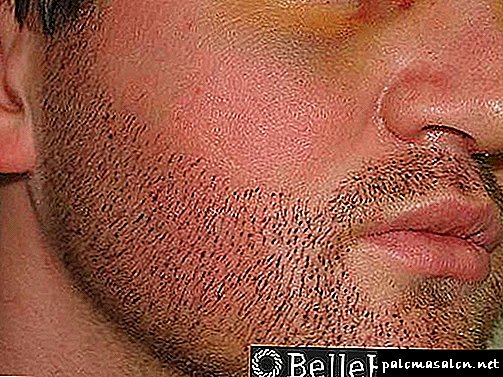
Procedure
The procedure for transplanting hair follicles takes place in several stages.
- Training. This stage is carried out under strict medical supervision. The patient is issued a referral for blood and urine tests, a coalagram. Be sure to determine the Rh factor and an HIV test. The patient, a few days before the transplant, must stop smoking and drinking alcohol, stop taking medicines that can disrupt the process of blood clotting.
- Transplant stage The patient is administered local anesthesia, and then inspect the site of the fence using a computer scanner. This determines the grafts suitable for transplantation. The doctor removes the desired area of grafts and places it in a plasma-enriched solution. Such a manipulation guarantees maximum survival of donor grafts (up to 96%).
- The implantation takes place with the help of a pen implanter. With its help, a groove is formed on the necessary area of the integument and is filled with grafts extracted earlier.
- Stage of rehabilitation. Depending on the transplantation technique chosen, the recovery period can last from two weeks to six months. In order to prevent side effects, the patient is obliged to follow all the doctor's instructions:
- during the rehabilitation period, avoid direct sunlight,
- limit physical activity
- give up alcohol and smoking.
Postoperative care
 Beard hair transplantation is complete. To save the result of the operation, men need to remember several rules of care:
Beard hair transplantation is complete. To save the result of the operation, men need to remember several rules of care:
- In the first seven days after transplantation, it is forbidden to touch the implanted hair and smile.
- To maintain perfect shape, starting from the second week, when the implanted hair follicles grow, you can use a trimmer.
Note! Enhance the growth of the new beard will help intake of vitamin complexes and proper diet.
Contraindications
The procedure for hair transplantation is not recommended:
- in the presence of purulent lesions in the areas of the planned transplant,
- allergic reaction to local anesthetics,
- for blood diseases
- patients under the age of twenty-five,
- with diabetes,
- with unstable psycho-emotional state of the patient (tendency to uncontrolled tearing of his own body hair),
- in the absence of healthy donor hair follicles,
- in the presence of chronic diseases in the acute phase of development, oncopathology.
A beard transplant will help to change the image, emphasize the individuality and style of the image, hide minor defects of the skin of the face.
Recommendations for hair transplantation
That's when a man is recommended hair transplant on the skin of the face:
- sloppy and ugly natural cover.
- Insufficient density of natural hair.
- The beard grows in scraps and does not completely cover the skin.
- On the face there are scars and other injuries that must be hidden.
In total there are 3 methods of hair transplantation:
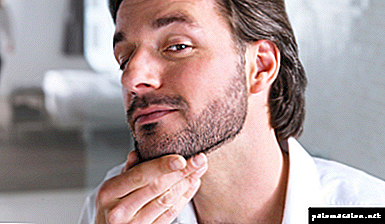 Fut.
Fut.- Hfe.
- Fue
What to apply in each case the doctor decides.
However, a man should get acquainted with the features of each method, and learn how to implement them.
What it is?
Officially, this method stands for Follicular Unit Transplantation or in Russian: Follicular Unit Transplantation. Even simpler: patchwork. It has been used since the late 1990s.
The essence of the method is as follows: from the zone of constant hair growth (usually the occipital part of the head), grafts are taken (follicular associations from 1 to 4 hair bulbs) and placed in the bald part, i.e. on the skin of the face. Thus, it is possible to reach a maximum of 6 hours transplant up to 6000 grafts. Survival rate is up to 92%.
Advantages and disadvantages
Advantages of the FUT method:
- price. The patchwork method is the cheapest because such transplant operations are usually performed by assistants. More experienced surgeons are involved in other ways.
- Efficiency. Compared to other methods, FUT allows you to collect twice as many skin grafts from the same area.
- Minimum damage. When performing a quality operation, the number of damaged hair follicles is less than 3%.
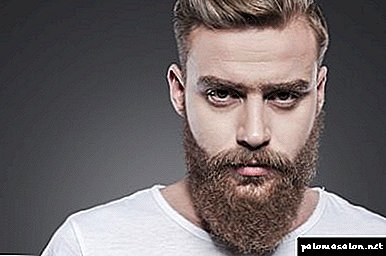 Rapidity. On average, the operation lasts 3-4 hours. This is two times less than in other ways.
Rapidity. On average, the operation lasts 3-4 hours. This is two times less than in other ways.- High graft survival after transplantation - up to 100%.
Disadvantages:
- scarring. In that part of the head, from where the follicular associations were taken away, scars remain, although not very noticeable. Especially they will stand out when shearing them hairy or too short.
- Unpleasant sensations. During 2-3 weeks after the operation, constant slight pain in the back of the head and a feeling of tension can be observed. Also, you can not engage in strong physical exertion, until this time period expires.
Literally not so long ago, a novelty came to us in Russia - Minoxidil for beard growth. This tool has a cool composition (read on the website), they promise fast growth (and the reviews already prove it), plus it costs almost a thousand rubles (this is a discount), so it's a sin not to try. I still have small results, but I only use it for two weeks. I leave the link below for you so that you can also buy Minoxidil at a discount.
Preoperative preparation
- First, the doctor must examine with the help of the Follicskop scanner the area of the head from which the material will be obtained. Computer dermoscopy provides accurate data on the scalp hair bulbs, talking about their density and quantity. For example, 80 grafts in 1 square centimeter are average density values.
- Based on the data obtained, the doctor will be able to determine how many patches and what size will need to be taken for the operation. This information should also be communicated to the patient.
The result is the area of the required flap.
How is the process itself?
Here are the steps of the operation:
 Anesthetists conduct local anesthesia at the beginning of the patient.
Anesthetists conduct local anesthesia at the beginning of the patient.- The surgeon cuts out the donor part of the scalp, trying not to damage the neighboring follicles and taking with him as much as possible of the hair follicles.
- Since a whole area of skin is taken, special techniques are used in some clinics that reduce the risk of a scar. For this, the damaged area is closed in a special way.
- The resulting flap should be divided into several parts. When performing an action, the number and density of follicular associations are taken into account.
The parameters should be such that as few hair follicles as possible die during transplantation. By the way, they are also treated with a solution for better survival before being placed in a new place.
As a rule, the operation lasts for several hours. The patient does not feel any unpleasant sensations or pain. A person can return home almost immediately after the procedure. Before this, a medical examination is carried out, recommendations are given.
If the patient is working at work associated with heavy physical activity, he will be advised to refrain from it for at least several weeks. The site itself heals within 2 weeks or more.
Where can I make and how much?
 One of the largest centers is Talizi.
One of the largest centers is Talizi.
He is in Tbilisi. Price for a patchwork transplant method: $ 0.65 per hair or $ 1.5 per graft.
The clinic employs 4 high-class surgeons, uses the latest methods of work and the most modern equipment. On the official website you can find out all the necessary information.
Another network of hair transplant clinics is located in Russia in a number of cities: from Moscow to Surgut. It is called Lynline. Regardless of the method chosen, the procedure itself costs 115,000 rubles at least + from 1000 rubles a surgeon's consultation.
3 BEST WAYS TO GROW A BEARD!
- The most effective and proven - Minoxidil. Click!
- Apply different balms
- The most "controversial" - transplant. We wrote about it here.
All beard guys!
Definition
At its core, it is more than different from other methods: take follicles from the back of the head and place them in the transplant area.
The main feature and advantage is the method of extraction of grafts using a special needle without opening and cuts. With the help of it, the collected bulbs are placed in the right sector of the face. There are no scars, respectively.
Beard transplantation (compaction). CFC method.
Advantages and disadvantages
The advantages of this technique are many:
- when grafts are harvested, the number of lost bulbs is less than 5%. This is an absolute record compared to other methods.
 Donor material takes root very quickly.
Donor material takes root very quickly.- After surgery, there is only a slight numbness effect in the back of the head. Pain and pulling sensations absent.
- No scars. At the site of the fence there are only small points from injections, which disappear after a few days.
- Maximum hair density is achieved during transplantation: up to 70-80 per square centimeter.
- The procedure can be repeated several times.
Cons HFE method:
- Increased price for the service due to the use of special new equipment and the operation of the most experienced surgeons.
- This method is not suitable for closing the hair of a large area of transplantation.
Preoperative period
Before performing the operation, doctors will take several tests to determine:
- blood clotting.
- Hemoglobin and glucose levels.
- ECG.
- The presence of hepatitis and syphilis.
The preparation includes, among other things, the patient’s refusal from alcohol 2 days before the operation, from smoking and from blood-bleeding drugs such as aspirin.
Moment of operation
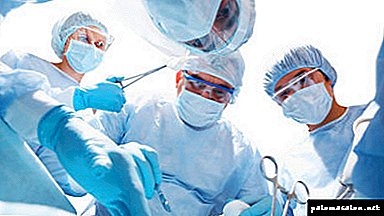 As soon as the day of surgery comes, the doctor makes local anesthesia to the patient, then examines the hair removal site, using a microscope, finds healthy microfollicular associations that can be transplanted.
As soon as the day of surgery comes, the doctor makes local anesthesia to the patient, then examines the hair removal site, using a microscope, finds healthy microfollicular associations that can be transplanted.- Next, the grafts are sorted according to the number of roots (from 1 to 4). As soon as the associations are found and sorted, they are removed using a micropunch or the thinnest micropipe. Its diameter is less than 0.9 mm.
- There comes the second stage of the operation. The surgeon takes another instrument called Choi. With it, the extracted material is placed inside the skin of the face at a certain depth. This maintains the natural angle of the hair.
The whole procedure lasts 3-10 hours. The duration is great, because all the intervention is done manually, and requires special care and qualification of the surgeon.
In just 1 day, up to 6000 grafts can be transplanted, but usually 2000 is enough. The effect of density will be achieved with the minimum amount of transplanted material.
Where spend and price
Only the name stands for Hair For Ever or Hair For Ever.
The initial examination is free of charge, and the price for transplantation depends on the qualifications of the doctor and varies from 60,000 rubles (3rd category surgeon) to 250,000 rubles (highest category). Those. the price of one transplanted follicular association is from 100 to 200 rubles.
Preparatory stage "before"
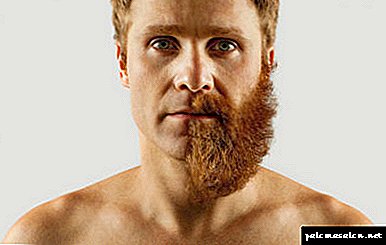 The patient must pass tests (the list can be extended if there is somatic pathology):
The patient must pass tests (the list can be extended if there is somatic pathology):
- hepatitis C and B.
- Coagulogram.
- AIDS and HIV.
- Clinical blood.
Also, the doctor will ask a week before the operation to stop taking drugs that worsen blood clotting (non-steroid, aspirin).
How is the implantation?
- First, the doctor determines which follicular units can be taken for collection on the back of the head. If there is little or no hair thickness, then the FUE method allows you to take the necessary material from another part of the body - the chest, legs and even the pubis.
- Once a spot has been identified with suitable hair follicles, it is isolated, and grafts are taken from there using a microscopic instrument.
- The collected area is placed in a special container. There is a saline solution that preserves the bulbs and does not allow them to "die." He will protect from dehydration. In order not to damage the donor site, a qualified surgeon takes only every 6th material allocated for transplantation.
- Then the grafts are examined by assistants under the microscope. Those bulbs that are healthy and suitable - remain, the rest - are removed. At this time, patients, without feeling pain or discomfort, can rest.
- As soon as the study and screenings are completed, the middle of the operation begins - the preparation of the skin for receiving the implanted hair. To do this, a punch is made on the face after certain micro incisions and channels up to 1 mm in size will be spaced.
This tool can leave small scars that heal quickly, but some remain. Number of holes counts special counter.
 As soon as the 5-8 hour operation is completed, the recovery period after the intervention begins. It lasts up to several weeks. In place of the incisions, a crust forms, which subsequently falls off, the remaining scars heal.
As soon as the 5-8 hour operation is completed, the recovery period after the intervention begins. It lasts up to several weeks. In place of the incisions, a crust forms, which subsequently falls off, the remaining scars heal.
During this time, doctors advise not to touch the area with implanted hair to avoid complications. The formation of edema is also possible.
Conclusion
Let's summarize the methods:
- FUT - the cheapest of all the "patchwork" type of operating hair transplantation.
- HFE is the most modern and advanced of all, but also expensive compared to other methods.
- FUE is a cross between other methods. It combines both moderate cost and advanced technology.
To choose a suitable beard transplant method, it is necessary to consult a professional trichologist and contact the clinic.
How to grow a beard for TWO MONTHS?
All means are good, but wait a result for a very long time. But how to reduce the waiting time and grow a beard in just a couple of months? Of course, with the help of Minoxidil. Have not heard of him?
What are its advantages? In the composition! It includes:
- 20 mg Minoxidil,
- propylene glycol,
- ethyl alcohol in 60% concentration and distilled water!
And the best part! When ordering today - a special discount of 50%! Order!
The process of hair transplant on the beard:
Immediately before the procedure, the contour of the future beard is carefully drawn. Hair implantation in the beard area is performed under local anesthesia. Modern preparations of local anesthesia allow you to carry out the procedure without serious consequences, in conditions comfortable for the patient.
1st stage of the procedure.
Removing grafts (skin fragments, including 1-2 hair follicles) for transplantation into the beard area. Grafts for transplantation are taken from the back of the head. Hair grafts are separated, prepared for transplanting into a beard, processed, sorted and counted.
2nd stage of the procedure.
Implanting grafts in the chin area.
disadvantages
- Scar: after surgery Strip method in the neck remains a scar. Although modern methods can make it invisible, with very short hair and a shaved head, the scar is still noticeable.
- The discomfort: a disadvantage can also be considered as a relatively uncomfortable postoperative period (slight pain and a feeling of tension in the neck, physical exercise restriction for 2–3 postoperative weeks).
How is hair transplanted?
In Platinum, we use the most modern seamless technology FUE - Follicular Unit Extraction - hair transplantation using the method of single follicles. Another name for this HFE method is Hand Follicular Extraction.
A follicle, or graft, is a hair or combined hair group (hair rarely grows alone, usually in groups of 2 to 4 hairs). Each graft is individually removed from the back of the head. Injured follicles do not survive, so we use a special atraumatic two-step method of intake and save up to 100% of the material.
Hair for a beard transplant is not taken from the face or neck - there is always the risk of scarring of the donor area, which will be noticeable on the shaved face.
We work on a complex technology without shaving - the hair on the back of the head is enough to shorten to 1 cm. If you have special wishes, we perform the procedure without shortening the back of the hair.
Hair sampling is carried out under a microscope with a special device - microsurgical punch with a diameter of only 0.6-0.9 mm. When properly applied, this technique does not leave scars on the head after healing and allows you to wear short haircuts even after transplantation.
Micro punch - a device for the gentle removal of follicles.
Hair removal scheme for transplantation.
Never take away a few growing near hair. Around each donor hair must leave a ring of living hair. Such an approach naturally masks the donor zone and is the key to rapid cicatricial healing.
Expert comment:
How is hair transplanted?
In Platinum, we use the most modern seamless technology FUE - Follicular Unit Extraction - hair transplantation using the method of single follicles. Another name for this HFE method is Hand Follicular Extraction.
A follicle, or graft, is a hair or combined hair group (hair rarely grows alone, usually in groups of 2 to 4 hairs). Each graft is individually removed from the back of the head. Injured follicles do not survive, so we use a special atraumatic two-step method of intake and save up to 100% of the material.
Hair for a beard transplant is not taken from the face or neck - there is always the risk of scarring of the donor area, which will be noticeable on the shaved face.
We work on a complex technology without shaving - the hair on the back of the head is enough to shorten to 1 cm. If you have special wishes, we perform the procedure without shortening the back of the hair.
Hair sampling is carried out under a microscope with a special device - microsurgical punch with a diameter of only 0.6-0.9 mm. When properly applied, this technique does not leave scars on the head after healing and allows you to wear short haircuts even after transplantation.
Micro punch - a device for the gentle removal of follicles.
Hair removal scheme for transplantation.
Never take away a few growing near hair. Around each donor hair must leave a ring of living hair. Such an approach naturally masks the donor zone and is the key to rapid cicatricial healing.
Expert comment:
The beard transplant operation consists of two stages.
Stage 1. Preparing the field on the back of the head and collecting grafts. Cooling, counting, sorting, enrichment with placenta extract, thanks to which the survival rate of the follicles increases to almost 100%. Such a transplant is effective even in the areas of the scar - hair take root.
Stage 2. Manual implantation.
The implantation procedure is performed under local anesthesia using disposable microimplanters. This is a special container where one follicle is placed. The implanter at the right angle sinks under the skin and gently leaves hair in it.
Do not save on hair transplant
For the implantation of grafts, under no circumstances do we use tweezers. This technique is cheaper, but usually injures the skin and follicles, which is bad for their survival. It is impossible to predict the success of transplantation using tweezers.
Before deciding on a transplant using tweezers, remind yourself that we have one donor hair zone, at the back of the head. After extraction of hair donors, they do not resume their growth. It is very easy to exhaust the resources of donor hair without getting a result, but then there will be no place to get new ones.
Should I rush to beard transplant or can I wait?
For our part, it would not be entirely ethical to say that everyone who does not grow a beard or grows unevenly needs a beard transplant.
As a rule, problems with a beard, mustache and whiskers end between 23 and 28 years. But if the hair does not acquire the necessary thickness, you should not expect miracles - genetics will not change. Beards Keanu Reeves and Johnny Depp evidence of this.
Therefore, to understand whether the expectation will bear fruit, it makes sense to get expert advice.
Price of the procedure
Current prices for beard and mustache transplants are listed in the price list of the clinic.
The cost of the procedure depends on the area of the transplant and the length of the hair.
Determine exactly how much hair transplants on the face in your case, can only be a personal consultation.
Growing a beard requires remarkable patience. We are ready to help you find this beautiful symbol of masculine strength and sexuality.
To make an appointment, call +7 495 723-48-38, +7 495 989-21-16 in Moscow.
You can make an appointment online and get a 30% discount on a consultation, or buy a clinic certificate and pay for any services at a 10% discount.
Mamontova Tatyana Aleksandrovna
And hair transplantation for a beard and mustache is becoming an increasingly popular plastic surgery that makes a man’s appearance more attractive and manly.
Beard and mustache hair transplant: price, reviews, complications, surgery technique
Modern fashion trends regarding the appearance of men made them also dependent on her whims. And hair transplantation for a beard and mustache is becoming an increasingly popular plastic surgery that makes a man’s appearance more attractive and manly. And if for representatives of Eastern countries, the presence of sufficient facial hair is compulsory, as they try to establish business and partnership relations with bezborodnymi men, then European men pay more attention to fashion.
What is beard and mustache transplantation
The operation of the beard and mustache hair transplantation involves the transplantation of hair follicles in this area, with its implementation there is a relatively small number of possible adverse events. The intervention itself is not dangerous for the life of the man, increasing his self-esteem in the event that the growth of facial hair is insufficient or the hairs grow unevenly.
Also, this intervention is used when there are areas with mechanical damage on the man’s face, while the scar tissue, which is formed in places of burns or mechanical damage to the skin, does not fully or partially function the hair follicles. The high degree of effectiveness of this operation, the minimal risk of complications and the affordable cost, as well as the ability to perform hair transfer to the locations of the beard and mustache at any age starting from 20 years old are additional advantages of this type of exposure.
What is a beard and mustache transplant, the doctor will tell in the video below:
Beard and mustache transplants enjoy considerable popularity, the transplantation process itself is relatively uncomplicated, but it requires a plastic surgeon to have a good knowledge of the facial anatomy and physiological features of the male body. An operation is prescribed after an external visual examination of the man’s face, a series of studies and analysis.
This operation is carried out with the complete or partial absence of hair in the lower part of the man’s face, under the lip and in the area of the whiskers.
The survival rate of transplanted hair follicles is quite high, which allows you to grow a beard and mustache of the required thickness throughout life.
The indications for hair transplantation in the mustache and beard area are the following states:
- absence (full or partial) of hair at the location of the beard and mustache,
- scar tissue on the face on which hairs grow poorly and rarely due to damage to the hair follicles,
- with trauma to the skin of the face and defects of appearance.
If the testimony listed above is available, the doctor will examine the state of health and identify any existing diseases that may be contraindicated for this type of surgery.
Holding
The process of hair transplant in the area of the beard and mustache consists of three stages:
- preparatory period which is necessary to prepare a man for exposure. At this time, you should give up bad habits (alcohol use and smoking, taking medications that can disrupt the process of blood clotting),
- the operation itself which, depending on the area of impact, can be from 1 to 3 hours,
- rehabilitation time during which the restoration of damaged tissues.
With full adherence to all the recommendations of the doctor, the likelihood of adverse events is reduced to a minimum. Proper implementation of all stages of the operation allows you to speed up the recovery process after this type of surgical intervention and the risk of side effects, as well as preserve the health of the man.
Required analyzes and activities
The preparatory period should be carried out under the supervision of a physician. A series of tests are assigned with which you can get a detailed picture of the patient's health. Usually assigned to the passage of the following studies:
A visit to an endocrinologist is recommended to identify violations of the hormonal system.
Long hair transplant in beard (photo before and after)
The process of the operation itself begins with the introduction of the selected type of anesthesia, which is mainly used intravenous. For hair transplantation, the material is taken donor, usually from the back of the head. Such hair grows sufficient for a beard and mustache length - 2-4 cm.
During this operation, small parts of the skin of the donor, taken from the back of the head and containing hair follicles, are transplanted. The process is rather laborious, since a small number of skin cells can be taken at one time. The whole amount of work is done depending on the frequency of donor hair follicles installation from 2 to 4 hours, the surgeon requires considerable attentiveness, experience and sequence of actions.
When performing the implantation of donor hair follicles in the beard and mustache region, the following points should be considered:
- the follicles should be placed at the same depth, which will ensure uniform hair germination,
- hair follicles are set at a certain angle so that the process of hair growth is close to natural,
- Constant vision control of the doctor performing the surgery will increase the degree of effectiveness of this type of exposure.
Since to obtain the desired effect, one should adhere to the rules listed above, the choice of a physician should be carried out consciously, taking into account his experience, the ability to competently perform transplantation and knowledge of the anatomy of the face.
The possibility of combining with other types of plastic impact
When carrying out a mustache and beard transplantation, the facial contours can also be corrected, and fillers should be installed in the desired area, but this combination requires special literacy of the doctor. And the duration of exposure with a period of recovery of damaged tissue increases.
A hair transplant procedure using the full non-surgical HFE method is shown in the video below:
Rehabilitation
After the grafts are collected, the occipital part heals for about 7 days.
The face after the transplant heals for about 3-5 days - pinholes of the microimplanter eliminate the appearance of edemas, bruises or scars.
Do not save on hair transplant
For the implantation of grafts, under no circumstances do we use tweezers. This technique is cheaper, but usually injures the skin and follicles, which is bad for their survival. It is impossible to predict the success of transplantation using tweezers.
Before deciding on a transplant using tweezers, remind yourself that we have one donor hair zone, at the back of the head. After extraction of hair donors, they do not resume their growth. It is very easy to exhaust the resources of donor hair without getting a result, but then there will be no place to get new ones.
Should I rush to beard transplant or can I wait?
For our part, it would not be entirely ethical to say that everyone who does not grow a beard or grows unevenly needs a beard transplant.
As a rule, problems with a beard, mustache and whiskers end between 23 and 28 years. But if the hair does not acquire the necessary thickness, you should not expect miracles - genetics will not change. Beards Keanu Reeves and Johnny Depp evidence of this.
Therefore, to understand whether the expectation will bear fruit, it makes sense to get expert advice.
Price of the procedure
Current prices for beard and mustache transplants are listed in the price list of the clinic.
The cost of the procedure depends on the area of the transplant and the length of the hair.
Determine exactly how much hair transplants on the face in your case, can only be a personal consultation.
Growing a beard requires remarkable patience. We are ready to help you find this beautiful symbol of masculine strength and sexuality.
To make an appointment, call +7 495 723-48-38, +7 495 989-21-16 in Moscow.
You can make an appointment online and get a 30% discount on a consultation, or buy a clinic certificate and pay for any services at a 10% discount.
Mamontova Tatyana Aleksandrovna
And hair transplantation for a beard and mustache is becoming an increasingly popular plastic surgery that makes a man’s appearance more attractive and manly.
Beard and mustache hair transplant: price, reviews, complications, surgery technique
Modern fashion trends regarding the appearance of men made them also dependent on her whims. And hair transplantation for a beard and mustache is becoming an increasingly popular plastic surgery that makes a man’s appearance more attractive and manly. And if for representatives of Eastern countries, the presence of sufficient facial hair is compulsory, as they try to establish business and partnership relations with bezborodnymi men, then European men pay more attention to fashion.
What is beard and mustache transplantation
The operation of the beard and mustache hair transplantation involves the transplantation of hair follicles in this area, with its implementation there is a relatively small number of possible adverse events. The intervention itself is not dangerous for the life of the man, increasing his self-esteem in the event that the growth of facial hair is insufficient or the hairs grow unevenly.
Also, this intervention is used when there are areas with mechanical damage on the man’s face, while the scar tissue, which is formed in places of burns or mechanical damage to the skin, does not fully or partially function the hair follicles. The high degree of effectiveness of this operation, the minimal risk of complications and the affordable cost, as well as the ability to perform hair transfer to the locations of the beard and mustache at any age starting from 20 years old are additional advantages of this type of exposure.
What is a beard and mustache transplant, the doctor will tell in the video below:
Beard and mustache transplants enjoy considerable popularity, the transplantation process itself is relatively uncomplicated, but it requires a plastic surgeon to have a good knowledge of the facial anatomy and physiological features of the male body. An operation is prescribed after an external visual examination of the man’s face, a series of studies and analysis.
This operation is carried out with the complete or partial absence of hair in the lower part of the man’s face, under the lip and in the area of the whiskers.
The survival rate of transplanted hair follicles is quite high, which allows you to grow a beard and mustache of the required thickness throughout life.
The indications for hair transplantation in the mustache and beard area are the following states:
- absence (full or partial) of hair at the location of the beard and mustache,
- scar tissue on the face on which hairs grow poorly and rarely due to damage to the hair follicles,
- with trauma to the skin of the face and defects of appearance.
If the testimony listed above is available, the doctor will examine the state of health and identify any existing diseases that may be contraindicated for this type of surgery.
Contraindications
The most important conditions that should be considered as contraindications for performing beard and mustache hair transplants include:
If you identify any of these conditions, you should either abandon the surgery, or first cure the existing disease.
Holding
The process of hair transplant in the area of the beard and mustache consists of three stages:
- preparatory period which is necessary to prepare a man for exposure. At this time, you should give up bad habits (alcohol use and smoking, taking medications that can disrupt the process of blood clotting),
- the operation itself which, depending on the area of impact, can be from 1 to 3 hours,
- rehabilitation time during which the restoration of damaged tissues.
With full adherence to all the recommendations of the doctor, the likelihood of adverse events is reduced to a minimum. Proper implementation of all stages of the operation allows you to speed up the recovery process after this type of surgical intervention and the risk of side effects, as well as preserve the health of the man.
Required analyzes and activities
The preparatory period should be carried out under the supervision of a physician. A series of tests are assigned with which you can get a detailed picture of the patient's health. Usually assigned to the passage of the following studies:
A visit to an endocrinologist is recommended to identify violations of the hormonal system.
Long hair transplant in beard (photo before and after)
The process of the operation itself begins with the introduction of the selected type of anesthesia, which is mainly used intravenous. For hair transplantation, the material is taken donor, usually from the back of the head. Such hair grows sufficient for a beard and mustache length - 2-4 cm.
During this operation, small parts of the skin of the donor, taken from the back of the head and containing hair follicles, are transplanted. The process is rather laborious, since a small number of skin cells can be taken at one time. The whole amount of work is done depending on the frequency of donor hair follicles installation from 2 to 4 hours, the surgeon requires considerable attentiveness, experience and sequence of actions.
When performing the implantation of donor hair follicles in the beard and mustache region, the following points should be considered:
- the follicles should be placed at the same depth, which will ensure uniform hair germination,
- hair follicles are set at a certain angle so that the process of hair growth is close to natural,
- Constant vision control of the doctor performing the surgery will increase the degree of effectiveness of this type of exposure.
Since to obtain the desired effect, one should adhere to the rules listed above, the choice of a physician should be carried out consciously, taking into account his experience, the ability to competently perform transplantation and knowledge of the anatomy of the face.
The possibility of combining with other types of plastic impact
When carrying out a mustache and beard transplantation, the facial contours can also be corrected, and fillers should be installed in the desired area, but this combination requires special literacy of the doctor. And the duration of exposure with a period of recovery of damaged tissue increases.
A hair transplant procedure using the full non-surgical HFE method is shown in the video below:
Rehabilitation
The recovery process after the operation requires compliance with all the recommendations of the doctor regarding regular disinfection of skin puncture sites in the mustache and beard areas, and the rejection of heavy physical activity. You should also give up bad habits in the form of alcohol and smoking, avoid psycho-emotional overload. Regular examination by a doctor will allow timely identification of existing deviations in the rehabilitation process and correction of the intervention.
During the rehabilitation period one should not visit the baths and pools, stay for a long time under the influence of the sun's rays and in the solarium.
Feedback on this procedure
Most of the men who decided to carry out hair transplantation in the beard and mustache area speak positively about this type of surgery: a quick rehabilitation period, the minimum number of possible complications and the emergence of a well-growing mustache and beard make it possible for the better to change the man’s appearance, to increase his self-esteem . And although the transplant process is quite lengthy, the reviews are mostly positive.
Doctors surgeons also talk about the good tolerability of this operation, rarely occurring side effects after its implementation.
Average prices and where to make
On average, the cost of a hair transplant for a mustache and beard ranges from 80 to 140 rubles per hair, which in total gives an impressive total amount (if a large amount of work is performed or it is necessary to correct the situation in the complete absence of hair on the man’s face).
This operation is performed in most clinics that specialize in plastic surgery and transplant of hair follicles. This type of surgery can be performed in medical clinics and in such large cities as St. Petersburg, Moscow, Yaroslavl, and Nizhny Novgorod.
This video shows the transplant procedure in great detail:
Hair transplant on a beard is becoming a popular plastic surgery. Due to fashion trends, where a beard is demonstrated as a symbol of masculinity, the need to conduct such operations becomes greater.
Hair transplant on a beard: operation, price, reviews of the conduct and photo
Hair transplant on a beard is becoming a popular plastic surgery. Due to fashion trends, where a beard is demonstrated as a symbol of masculinity, the need to conduct such operations becomes greater. If Asian men have a transplant - this is a necessity (with a beardless representative of the stronger sex try not to do business), then Europeans pay tribute to fashion. Fashionable hobbies of men (for example, beard hair transplantation) do not differ from the efforts of women, if it concerns the appearance of the head.
Who and where do the manipulation
Hair transplantation from any place of the body for a beard can be done to anyone who is over the age of 20. To do this, it is enough to turn to a plastic surgeon. Particularly needed transplant in some cases:
- No beard growth.
- Uneven growth of hair on the face of the desired area.
- Need to hide visible scars.
Facial hair does not grow more often for a genetic reason. Nothing can be done about it, only transplantation will help here, there are no other ways for vegetation to appear. Uneven growth of hairs on the face has the same cause or is associated with past illnesses and injuries. Extensive cicatricial surfaces on the face (after burns, wounds) do not increase men's confidence in their attractiveness. According to Internet users, hair transplantation gives a good corrective result.
According to the same users, hair transplantation is better done where it is done often, with a good result. The most positive reviews are cosmetic clinics in Turkey, where they conduct such operations for a long time, there are progressive techniques. The price of the procedure in Turkey is about half as much as that conducted by domestic clinics, where experience of operations of this kind is not enough.
Ways to
Facial hair transplantation is performed in several ways. They all use donated hair from other parts of the body. Most often, hair is taken from the nape of the scalp, their survival is best, they grow of sufficient length. If you need to restore the density of the eyebrows (this happens in women after frequent removal of eyebrow hairs), then the length is not decisive in the choice of donor area, you can take the material from the neck, arms.
Growing hairs are in this case 2-4 cm long. For the mustache zone, beards there are 3 methods of intervention, of which the most common is the FUE method. Its essence is as follows:
- Small areas of skin with hair follicles (grafts) are taken from the donor area of the neck.
- Place grafts in the desired areas of the face, marked in advance.
A total of 1000 to 3000 grafts are used for the beard during the intervention. This procedure is time-consuming, requires attention, the skill of the surgeon, spend her a few hours. For this reason, the price of the procedure depends on the amount of hairs to be implanted. In Moscow, the cost of a hair transplant is 80-90 rubles. “Turkish” operation with hotel accommodation will cost approximately 2500 euros.
Transplantation will be most successful if carried out with the HFE method, where the same intervention steps are performed using special needles. Obtaining donor hairs, implantation in certain areas make skin punctures to a strictly defined depth. All manipulations are accompanied by vision control, each transplanted hair is set at the right angle for growth in the desired direction. The price of this procedure is higher, but has the following advantages:
- Less trauma to the skin of the donor area of the head.
- The best effect of engraftment of follicles.
- Short recovery period (about 2 weeks), which differs from other methods.
After such an operation there is practically no scarring. The hair grows in the right direction. It is possible to perform an operation on an outpatient basis, which reduces its price. Preparation for the procedure takes one day, when the necessary laboratory tests are carried out, hair transplant in the desired area is done the next day.
The doctor examines the man, outlines the contour of the future beard, mustache, tanks, highlights with a felt-tip pen on the skin areas for graft transplantation, as shown in the photo, voices an approximate price. Anesthesia during the procedure is carried out with the introduction of local anesthetics. The hours-long intervention is shorter if two surgeons work simultaneously (the price of the procedure may remain the same).
Hair transplantation is done, recovery after it occurs in several stages. The men who have postponed the procedure recommend to have patience in their responses for this difficult period. The first week a man can not smile, touch the transplanted area of skin due to the danger of loss of follicles that have not yet taken root, as seen in the photo.
This is a serious difficulty due to the frequent pruritus that occurs at the site of intervention. You have to sleep only on the back, but often this is hampered by the emerging pain of the donor area. Reviews "sufferers" recommend learning to sleep while sitting, as in the plane. 1-2 weeks may be swelling of the face. After 4-6 weeks, the follicles survive, but the hairs can fall out.
You should not worry, after a short period of “sleep” the follicles will work, the hair will grow back. After about six months, you can proudly display your luxurious beard. Compare photos before and after surgery. The beard is not going anywhere, it will grow after the transplant and please the eye, if it is followed by proper care.
At what age is it carried out and where is the best
Hair vegetation on the cheeks can be increased with the help of an operation from the age of twenty. The reason that a beard grows unevenly is usually genetics. It can also be the result of injury, past diseases, burns, wounds.
For the solution of these problems it is better to turn to where these operations have been carried out for a long time.
Note: According to numerous reviews, it is better to have a hair transplant in Turkish cosmetic clinics, because they have many years of experience and use progressive methods. The cost of plastics in Turkey is approximately two times less than in Russia.
How is the operation performed?
There are three stages:
- Preparation, during which the patient refuses to use alcohol, smoking.
Also stops taking medications that interfere with blood clotting. - The operation itself, which lasts from one to three hours.
- The postoperative period in which damaged tissue is restored.
If you follow the instructions of the surgeon, side effects can be avoided or minimized. With the quality of all stages of transplantation recovery is faster.
Research
What tests will be needed to determine the state of health?
The doctor prescribes:
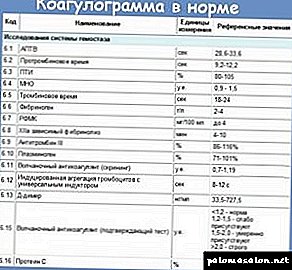 - general and biochemical blood test
- general and biochemical blood test- - general urine analysis
- - coagulogram
- - blood test for HIV and determination of the Rh factor
It is also advised to visit an endocrinologist to make sure that there are no violations of the hormonal system.
In plastic surgery, several methods of hair transplantation are used. They all boil down to the fact that donor hair is transplanted from other parts of the body. Commonly used hairs from the back of the head. They take root better and usually have the required length.
Long hair transplant
This method is a more advanced version of the Strip method, in which grafts are extracted and transplanted with long (3–8 cm or more) hair.
Long hair transplantation has all the advantages that characterize the FUT method (speed, a large number of grafts, the ability to optimally exploit donor stock, an extremely low percentage of damaged follicles, a high survival rate of transplanted grafts), as well as its strengths.
During normal hair transplantation (Strip or FUE), the surgeon makes the implantation of grafts, based on his experience and a preliminary plan of the transplant, although, in reality, it is actually blind: the surgeons make holes with such density and angle as they see fit, the assistants Surgeons put grafts in microperforations, of which after 3 months the hair begins to grow. How should the hair grow and what result will be obtained a surgeon can only represent, based on his own experience. Neither the surgeon, nor his assistants, nor the patient himself can see the result - the hair on his head. During transplantation of long hairs, the surgeon in the implantation process sees the result that should be obtained as a result of the transplant, and can more accurately distribute donor material, determine the direction of growth and density, getting the most natural result.

 - at full or partial absence of hair in the beard area
- at full or partial absence of hair in the beard area Fut.
Fut. Rapidity. On average, the operation lasts 3-4 hours. This is two times less than in other ways.
Rapidity. On average, the operation lasts 3-4 hours. This is two times less than in other ways. Anesthetists conduct local anesthesia at the beginning of the patient.
Anesthetists conduct local anesthesia at the beginning of the patient. Donor material takes root very quickly.
Donor material takes root very quickly. As soon as the day of surgery comes, the doctor makes local anesthesia to the patient, then examines the hair removal site, using a microscope, finds healthy microfollicular associations that can be transplanted.
As soon as the day of surgery comes, the doctor makes local anesthesia to the patient, then examines the hair removal site, using a microscope, finds healthy microfollicular associations that can be transplanted. - general and biochemical blood test
- general and biochemical blood test

